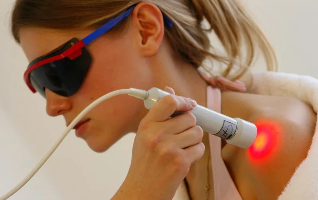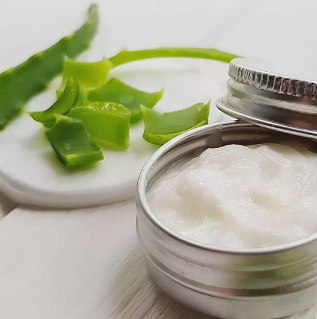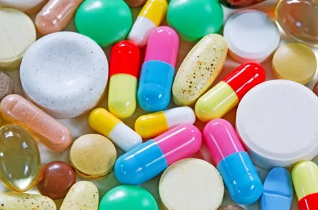The defeat of nails with fungus not only affects their aesthetic appearance and quality of life, but can cause serious complications. Especially dangerous is the disease for people with weakened immune systems and abnormal hormonal level. Treatment of fungal infection is difficult and takes a long time. The later measures taken, the harder it is to get rid of the nail parasites, so when it detects the first signs of the disease should be to consult a dermatologist.

Causes of nail fungus
The defeat of the nail plate parasitic fungi called dermatophytes onychomycosis. The etiology of the disease is associated not only with the penetration of the parasite into the body, but also with fixing it in the Horny layers, which cannot happen without the creation of certain conditions. The main reason for the occurrence of nail fungus is the presence of a favorable environment for reproduction of microorganisms. Infection occurs by contact exposed areas of the body with contaminated objects or an infected person.
After penetration of the parasites on the skin, they are fixed in the surface layer of the epidermis and gradually spread to healthy skin.
Before penetration of the fungi into the deeper layers of the disease are asymptomatic, and in the absence of favourable conditions pathogens are replaced by newly formed healthy cells outside of the Horny plates. In the presence of certain conditions conducive to the formation of a favorable environment for increasing the total mass of the fungi is their penetration into the nail plate and the rapid advancement in the nail.
The effects of fungus on the nails
In the absence of timely treatment, the fungus spreads to healthy nails. Violation of the aesthetics of appearance of the fingers and toes — not the most dangerous consequence of the disease. Athlete's foot represents the focus of infection, which can provoke inflammation in the dermis and cause increased sensitivity of the organism. As of the allergen are products of microorganisms that possess high toxicity for the human body.
Secreted by the pathogens of onychomycosis biological substances can trigger the development of bodily diseases, including very heavy. Under the influence of toxic bio-active substances may develop the following diseases:
- inflammation of the skin allergic nature;
- liver;
- acute lesion of the entire surface of the skin and mucous membranes.
Persons with diagnosed diabetes are not only at greater risk of fungal infection, but also often suffer from the effects of onychomycosis. In diabetics there is a violation of the sensitivity of the extremities that interferes with timely detect the first signs of disease and delay in treatment of the disease in these patients infection is fraught with cracks on the skin for athlete. The most frequent complications of fungal infection in diabetes are:
- infection of the bone;
- gangrene of the lower extremities;
- trophic ulcers on the legs.

Treatment of nail fungus
The duration of the therapeutic course in onychomycosis depends on the stage of disease and the nature of its flow. The goal of treatment is eradication (total destruction) of fungal parasites. Scheme of antifungal therapy is developed by a dermatologist on the basis of the result of the diagnosis, during which reveals the type of the causative agent and checks in the body of other pathogens (in case of bacterial complications).
The Arsenal of medical techniques includes several methods of destruction of fungi, the feasibility of which is determined by the physician based on the degree of deformation of the nails. Treatment of fungus on the nails is one of the following methods:
- Drug – disease occurring in the form of light, are appointed by the local antimycotic agents (creams, ointments, gels, lotions, paints, sprays) as monotherapy, with onychomycosis of moderate and severe forms of the therapeutic framework is complemented by tablets, capsules for oral administration.
- Laser therapy is indicated for minor damage in the absence of opportunistic infections, is an alternative method that can replace long-term use of drugs.
- Removal of the nail plate – a radical method of therapy of onychomycosis is often recurrent and severe forms of the disease.
- Antibiotic therapy is administered in case of complications of fungal diseases bacterial infection.
The removal of the affected nail
Before the development of modern methods of medical treatment of a fungal infection of the nail removal was the only way to get rid of fungal infections. The classical method of removing the affected nail plate is surgical. Currently, this highly traumatic and painful method is resorted to rarely, which is associated with the risk of postoperative complications (wound infection, prolonged and difficult recovery period).
To alternative, less painful methods of removal include pedicure and laser therapy. During these procedures the plate softens keratolytic preparations and layers is removed with special tools (cone-shaped cutters with abrasive coating or laser equipment). The disadvantages of these methods include the risk of allergic reaction, infection, incomplete removal of the fungus.
To remove the nail plate without mechanical stress, and with the help of special preparations. Medications, lfor of softening the keratin (material, part nails) are called ceratolici. The mechanism of their action is based on the ability of the major components (urea and acid) to change the structure of the plate, making it pliable and soft.
Pills
Tablet medication is indicated for moderate and severe fungal infections. In the scheme of treatment of onychomycosis include mainly 2 groups of antifungals – the azoles and the allylamines. The effectiveness of therapy with oral application of funds increases significantly, but the pills must be administered under medical supervision due to the presence of side effects associated with a highly specific action of antifungals.

Ointments and creams
In the absence of the need for systemic therapy of fungal infections (mild forms, the extent of the lesion not more than 2/3 of the area of the nail plate) drugs local actions can be used as monotherapy. Antimycotic ointments and creams to potentiate the action of drugs, taken by mouth, therefore the combined use of systemic and local therapy accelerates the healing process.
The drug from nail fungus should appoint a dermatologist based on the clinical picture of the disease and specific for diagnosis of the pathogen. Inappropriate choice of means of treatment may be not only ineffective, but dangerous. Advantages of using creams and ointments to get rid of the fungus are fewer side effects, rapid elimination of unpleasant symptoms, disadvantages – duration of treatment and ineffectiveness in severe disease.
Treatment of fungus on the feet and hands with lacquer
Means of local action, used for direct application to the nail is antifungal lacquer. The inclusion of a therapeutic regimen varnish does not negate the use of other dosage forms of antifungals. Independently, these tools can only be used as prevention. The advantage of add-on therapy varnishes is to eliminate aesthetic defects in the form of changed color or deformation, the disadvantage is the high cost of the treatment course.
The mechanism of action of antifungal drugs in the form of varnishes based on fungicidal properties of their constituent components. To enhance the effectiveness of their means should be applied daily on cleansed from dead tissues and degreased nail plate (the old layer of varnish should be removed with a solvent).
Laser therapy
One of the modern methods of treatment of fungus is laser therapy – burning laser beam of fungal colonies in a matrix of keratin plates without destroying healthy tissue. The indications for this procedure there may be all forms and stages of onychomycosis. The use of the laser provides instantaneous death of the parasite and accelerates the healing process. The number of sessions of laser therapy (duration about 30 minutes) is determined based on the severity of the defeat. Produced manipulations do not cause pain and almost never have side-effects.

Treatment of nail fungus folk remedies
The use of recipes of traditional medicine in the treatment of onychomycosis are allowed only as one of the methods of traditional therapy to enhance its therapeutic effect. If for any reason there is no opportunity to seek medical care if you notice signs of fungus, should take measures as early as possible to prevent the transition of the disease in severe form (at the advanced stage self-medication can lead to very dangerous consequences).
Due to the prevalence of fungal infections alternative medicine offers many ways to solve this problem, using internal and external funds. The most popular folk remedies for the treatment of nail fungus:
- Vinegar (70% essence). Effective and fast means is a paste made out of vinegar, eggs and butter. In a container pour 200 ml of vinegar, omit the whole egg and remove in a dark place. Once dissolved, the eggs should strain the liquid and enter 1 tsp oil. The resulting paste is applied for 12-14 h under the film on the steamed plots. As softening of the plate it should be cut off until the complete disappearance of signs of mycosis.
- Iodine. If, immediately after detection of the first symptoms of onychomycosis are available with antiseptic such as iodine, – you can resolve the problem over 1-2 treatments. In the later stages, this method is ineffective. Manipulations are applied to the affected areas of iodine to the point, while the substance does not cease to absorb. Before the procedure you should steam the feet or hands and give them to dry completely. When a strong burning sensation during the treatment it is necessary to lower the limb in a bowl of cold water.
- Juice of celandine. The plant has a bactericidal effect, which leads to its use for the treatment of fungal diseases. Therapeutic manipulations are carried out to clean your feet or hands. The juice from the stem of fresh-plucked celandine, it is necessary to moisten a cotton pad and apply it to the affected areas, covering them with gauze. Three times daily this procedure will help for 2-3 weeks to get rid of the signs of the disease.
- Hydrogen peroxide. One of the methods that contribute to the rapid elimination of fungal infection, is a three-stage procedure with application of hydrogen peroxide. The affected surface is first processed with a mixture of vinegar (3%) and hydrogen peroxide (3%) in the ratio of 1 to 1, after which the fingers are immersed for 30 sec. in a very weak solution of sodium hypochlorite. After soaking in the tool should be thoroughly washed, dry fingers or legs and to put on nails mixture of tea tree oil and vaseline. The duration of treatment is 1 week.
- Tincture of Euphorbia. For the treatment of skin and nail pathologies you can use all varieties of milkweed. To prepare the tincture, pour a small amount of raw materials with boiling water and leave to infuse for 2-3 h. cooled down to 45-50 degrees in the infusion is necessary to steam the legs or arms for half an hour. After 3-4 weeks of daily treatments, the symptoms should disappear.
- The tea tree oil. The content in this means of substances such as limonene, alpha-terpinene, sabine, alpha-phellandrene, cineol provides antiseptic and anti-inflammatory effect. For the destruction of fungi-dermatophytes is recommended for 8-10 weeks of baths with add 15-20 drops of oil.

Prevention
Parasitic organisms are spread everywhere and completely limit your contact with them is impossible, but by observing certain precautions, you can reduce the risk of infection. Prevention of onychomycosis is aimed at reducing the likelihood of infection and immune protection for preventing the consolidation of pathogens in the body. The main preventive measures are:
- regular hygienic measures for the care of skin of feet and hands;
- getting rid of hyperhidrosis of the feet;
- removing excessive dryness of the skin;
- limiting contact of open skin with household items in public places;
- daily change socks, stockings, tights, etc.;
- wearing comfortable shoes and clothes made of breathable materials;
- timely treatment of microtrauma, degenerative changes of the nail plate;
- compliance with equipment sterilization and disinfection of tools for manicure and pedicure;
- avoiding harmful habits;
- adherence to the principles of a balanced diet, limiting the intake of sugary foods;
- periodic (spring and autumn) the intake of vitamin complexes.
It is impossible to ignore the symptoms or attempt to self-diagnose. Most of the demand for medical care is already on the severe stage of the disease, which is associated with confidence of patients that they can't develop onychomycosis as they adhere to all listed rules. Note that even with all the medical recommendations for the prevention of fungal infection the probability of infection is reduced, but some risk of infection still remains.





























